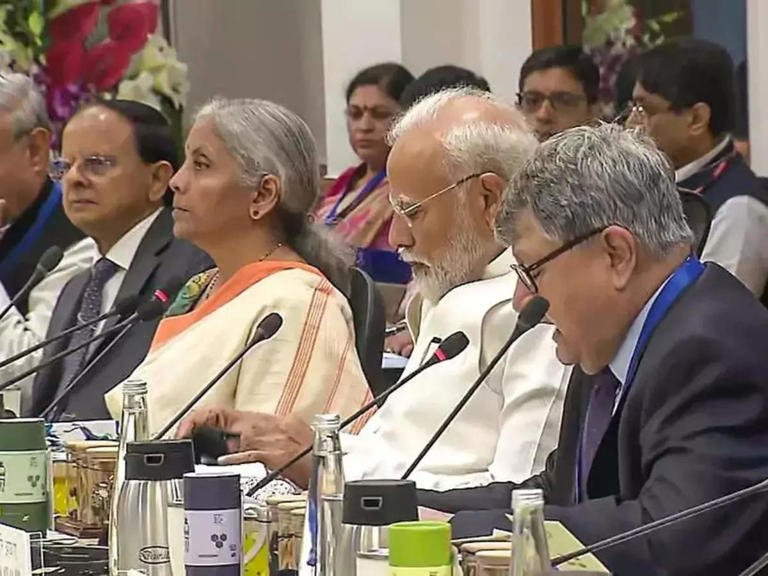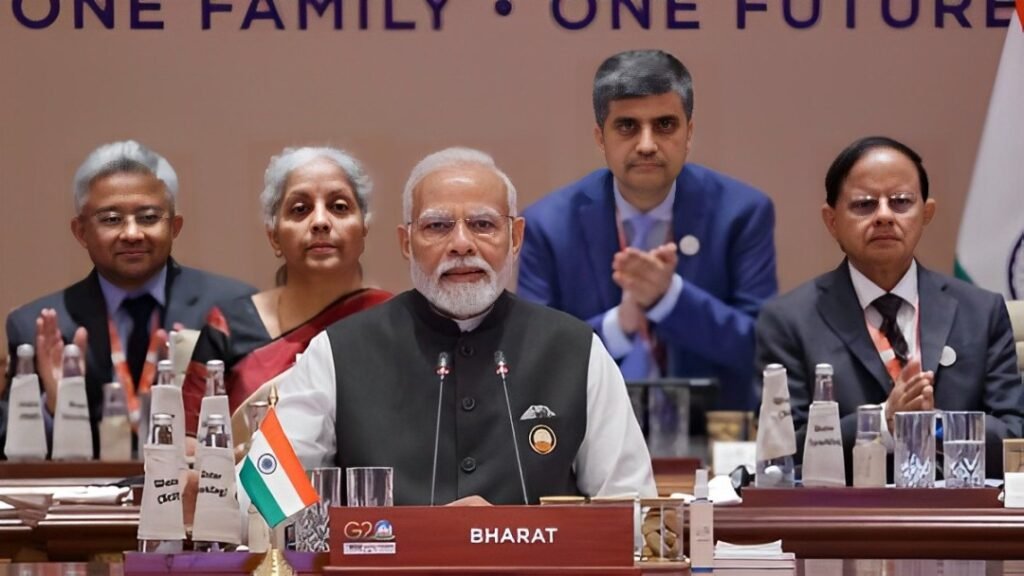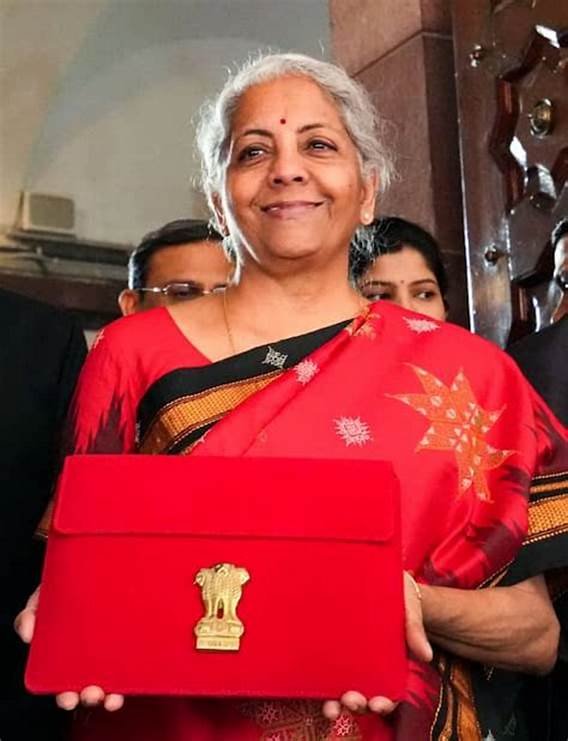The Modi government aims to rebuild voter trust in the upcoming budget.
Indian Prime Minister Narendra Modi will seek to mend his relationship with voters in the federal budget to be announced next week, economic analysts said. They cite possible steps to boost jobs and incomes as economic growth remains uneven and food prices continue to surge. This budget is expected to reflect a renewed focus on addressing economic challenges and enhancing public welfare.

Context and Political Backdrop
Indian Prime Minister Narendra Modi faces the task of mending his relationship with voters in the upcoming federal budget, following a significant setback in the recent general election. Modi’s party, the Bharatiya Janata Party (BJP), fell short of the halfway mark needed for a majority, as economic concerns such as job shortages and the high cost of living overshadowed his high-voltage Hindu nationalist campaign.
Dependence on Regional Allies
To maintain power, Modi is now relying on two regional allies: the Telugu Desam Party (TDP) and Janata Dal (United). The TDP controls Andhra Pradesh, while Janata Dal (United) governs Bihar. These alliances are crucial for Modi’s political stability, as both parties hold significant sway in their respective states and have demonstrated a tendency to shift allegiances based on regional interests and political expediency.
Upcoming Budget: Focus on Economic Policies
The first budget of Modi’s third term, to be tabled by Finance Minister Nirmala Sitharaman on July 23, will offer the first glimpse of potential shifts in the government’s economic policies. This budget is particularly significant as it replaces the interim budget estimates for the fiscal year 2024/25, which began on April 1.

Balancing Economic and Political Imperatives
Economic analysts, including Shreya Sodhani, a regional economist at Barclays, anticipate that the budget will strive to balance economic imperatives with political considerations. This balancing act is essential as Modi seeks to address the economic issues that contributed to the BJP’s election setback while maintaining the support of his regional allies and the broader electorate.
Expected Measures: Jobs and Incomes
Analysts predict that the budget will include measures aimed at boosting jobs and incomes, in response to the uneven economic growth and surging food prices that have affected many voters. These steps are expected to be part of a broader strategy to stimulate economic activity and improve the financial well-being of Indian citizens.
Funding Higher Spending
Sodhani suggests that the government may utilize the windfall from the Reserve Bank of India’s (RBI) dividend and higher tax revenues to fund increased spending, rather than focusing on deficit reduction. “We think the budget will balance economic imperatives with political ones,” said Sodhani. This approach would allow the government to address immediate economic challenges while also investing in longer-term growth initiatives.
Strategic Investments and Social Programs
The budget is expected to allocate funds for strategic investments in infrastructure, education, and healthcare, which are critical for sustainable economic growth. Additionally, social programs aimed at alleviating poverty and supporting vulnerable populations may receive increased funding, reflecting the government’s commitment to inclusive development.
Central Bank Surplus Boosts Spending Capacity
A record $25 billion surplus transfer from the central bank will provide the Modi government with more room to spend without expanding the fiscal deficit. According to a majority of economists polled by Reuters, the fiscal deficit target will be retained at 5.1% of gross domestic product (GDP).
Focus on Infrastructure and Manufacturing
Over the last three years, the government has nearly doubled its spending on long-term infrastructure projects to drive growth and generate jobs. This year, the government plans to allocate 11 trillion Indian rupees ($131.61 billion) to such projects. Some economists anticipate an added emphasis on manufacturing in the budget.

Nomura economists highlighted the expectation for the government to continue promoting domestic manufacturing. They predict an increase in local procurement requirements and the extension of a concessional tax rate for new manufacturing facilities.
Consumption-Boosting Measures
The budget is also expected to introduce consumption-boosting measures that were absent in the interim budget presented before the elections. According to a Reuters report, the budget may lower personal income tax for certain categories, providing relief to the Indian middle class.
Political analyst Rasheed Kidwai noted the importance of addressing middle-class concerns. “The Indian middle class has been supporting Modi in a very determined way. But for years, they have not gotten much relief,” Kidwai said. “The time has come for the government to give some kind of relief to them.”
Enhanced Subsidies
In addition to these measures, the government may increase state subsidies for rural housing and food, aiming to support vulnerable populations and stimulate rural economies.
Allies’ Demands Put Modi Government in a Tough Spot
Pressure from Key Allies
The Modi government faces a challenging situation as its two key allies have demanded $6 billion in funds for their respective states. This move could potentially trigger similar demands from other states. Before the election, several states, including opposition-ruled West Bengal and Kerala, claimed they had not received a fair share of funds from New Delhi. The federal government, however, has contested these claims.
Potential Consequences
Political analyst Rasheed Kidwai commented on the situation, describing it as “opening a Pandora’s box.” He warned that preferential treatment to the allies could lead to “a lot of heartbreak” among other states and political entities.

Possible Solutions
To address the issue without exacerbating tensions, one possible solution the federal government could offer is an increase in interest-free long-term loans for infrastructure projects. Currently, the allocation for these loans stands at 1.3 trillion rupees. Axis Bank anticipates that this allocation could increase by 400 billion Indian rupees, providing a financial boost to state infrastructure projects without directly favoring the allies over others.
Government to Maintain or Lower Market Borrowing Amid Strong Tax Collections
Despite the spending pressures, the government is likely to maintain or even lower its planned market borrowing for the year. This decision comes as spending in the first half of the year was slow and tax collections have been robust. According to a Reuters poll, gross market borrowing will be retained at 14.13 trillion rupees. However, some economists believe there is scope to reduce this amount.
JPMorgan estimates that borrowing could be reduced by between 400 billion to 500 billion Indian rupees compared to the interim budget. This adjustment reflects the government’s intention to manage fiscal pressures while capitalizing on strong revenue performance.
Stay tuned to Club4Celebs for more updates.


